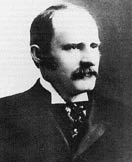Saving Monticello: The Newsletter
The latest about the book, author
events, and more
Newsletter Editor - Marc Leepson
Volume XIII, Number 12 December
1, 2016
THE
FIRST JEWISH AMERICANS: Anytime
you talk about the first Jewish Americans you have to include the members of
the Nunez, Machado, Phillips, and Levy families, who arrived here in 1733 and
whose ranks included some of the most illustrious people in colonial America
and in the Early Republic.
“The First Jewish Americans,” the new exhibit that opened
late in October at the New York Historical Society Museum and Library on
Central Park West, does, in fact include Uriah P. Levy and other members of his
family. The second half of the title, “Freedom and Culture in the New World,”
indicates the exhibit’s theme: that the very small number of early American Jews
“significantly negotiated the freedoms offered by the new nation and
contributed to the flowering of American culture.”
The wide-ranging exhibit includes portraits, drawings, maps, documents,
and ritual objects. It focuses on Jewish American artists, writers, and
activists. Many of the objects are on loan from the Princeton University Jewish
American Collection and were the basis for “By Dawn’s Early Light: Jewish
Contributions to American Culture from the Nation’s Founding to the Civil War,”
a similar exhibit that was on view at Princeton’s Art Museum earlier this year
and which we covered in the May SM Newsletter:
http://bit.ly/SMMay2016
A significant part of is devoted to artifacts from Shearith Israel, the first Jewish congregation in the United States. Founded in 1654, Shearith Israel has since the 1890s been located just a few blocks from the N.Y. Historical Society on 70th Street and Central Park West.
Uriah Levy’s great grandfather, David Mendez Machado, who
married Maria Caetana Nunez (known as Zipporah), the oldest daughter of the
family patriarch Dr. Samuel Nunez, served as the hazzan of Shearith Isreal
after moving from Savannah to New York in the late 1730s.
Uriah Levy, who was
born in Philadelphia, was a member of Shearith Israel after he moved to New
York City in the 1820s. One of his nephews, L. Napoleon Levy, served as the
congregation’s president.
The Shearith Israel portion of the exhibit includes 18th
century finial ornaments called rimmonim (above)
that sit on top of Torah poles, and a Torah scroll (below) vandalized by British soldiers during the Revolutionary War.
For more info on the exhibit, go to http://bit.ly/2NYHistSoc
EVENTS: My next book, the first-ever biography of Barry Sadler, will be published May 1. For more info on Ballad of the Green Beret, go to http://bit.ly/GBBallad
Only one event in
December:
- On Saturday, December 17, 2:00 talk on Desperate Engagement, and book signing at the James M. Duncan
Branch of the Alexandria, Va., Library at 2501 Commonwealth Ave. in
Alexandria. It’s free and open to the public. For more info, go to http://bit.ly/DuncanBranch
Please email if you’d like to arrange an event for Saving Monticello—or for any of my other
books, including my Francis Scott Key biography, What So Proudly We Hailed, Lafayette:
Idealist General, and the Barry Sadler bio (starting in May)—at marc527psc@aol.com
For details on other upcoming events, go to bit.ly/SMOnline
That’s the “Author Events” page on my website, www.marcleepson.com
Facebook,
Twitter: If you’re on Facebook, please send me a friend request. If
you’re on Twitter, I’d love to have you as a follower.
Gift
Ideas: If you would like a
personally autographed, brand-new paperback copy of Saving Monticello, e-mail me at Marc527psc@aol.com Or go to http://www.marcleepson.com/signedbooks.htmlto order copies through my local bookstore, Second Chapter Books in Middleburg,
Virginia. We also have copies of Desperate
Engagement, Flag, Lafayette



















